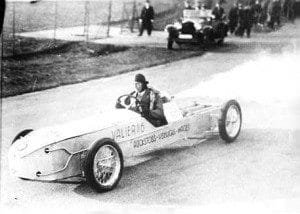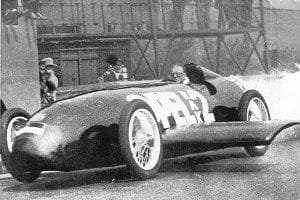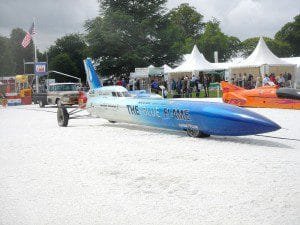Rocket Cars were quite a sight in the 1920’s. They were in a way inevitable since man has tried to push the limits with just about every transportation method developed. Steamboats are one good example. During the 1800’s, steamboat racing was a sport. Spectators would line river banks to view the event and cheer on the captain of their choice. This type of racing went on for many decades and unfortunately, sometimes, the race would end in disaster when an over taxed boiler would explode. The federal government only intervened when racing went on with fully loaded vessels and explosions would cost innocent lives.

The rocket car was man’s attempt to set speed records on dry land. Instead of using an internal combustion engine, the rocket car naturally used rocket power. Historians generally agree that a man named Max Valier was the earliest rocket car pioneer in conjunction with Fritz von Opel of Opel automotive fame. Valier was first working with solid fuel rockets and then tested liquid fuel rockets. The first recorded rocket car was the Opel Rak-1 which got up to 47 MPH in 1928.Two months later the Opel Rak-2 reached 147 MPH using a series of rockets. That was an incredible speed in the 1920’s. Opel went on to test a few rocket trains which met with disaster, one by jumping the tracks and another with a rocket engine explosion. Testing of rocket engines during the 1920’s was not for the faint of heart.

Max Valier actually had a successful testing of the Valier-Heylandt Rak-7 in April 1930. Unfortunately, Valiers career was cut short when an experimental liquid fueled rocket exploded in his workshop and took his life.
In more modern times, the Budweiser Blue Flame claimed to have broken the sound barrier in 1977. The three wheel car was powered by a hybrid solid and liquid fueled rocket but the Blue Flame never received credit for breaking the sound barrier due to a controversy of whether the speed record was actually broken. Another run of the Budweiser Rocket at Edwards Air Force Base in California at a later date showed that the record had been broken but because of the short duration of the top speed, no formal recognition was awarded.
A Lot of experimentation with rocket cars continues to this day. In many cases the rocket car is more like a rocket with a set of wheels rather than a car with a rocket engine. In fact, people have put rockets on tractors, easy chairs and outhouses. More than one has had a fire marred conclusion.

Current Drag Racing entries include jet powered cars often placed in the “Funny Car” category which also includes many alcohol burning engines. There are drag racing cars that are Jet Cars and others that are Rocket Cars. A Jet Car has a jet engine with an air intake similar to a jet airplane engine. A Rocket Car has a rocket with liquid fuel of hydrogen-peroxide. For safety reasons tied to their propulsion systems and fuel, the Rocket Cars have been banned in NHRA events in the US. For Jet Cars, the NHRA has strict MPH rules in place which is 330 MPH. In Europe, the Jet Cars to my knowledge run in drag races unimpeded. Rocket Cars continue to run in several venues in Europe.
What essentially happens with speed over land…when the speed reaches a certain high point combined with the aerodynamics of the car design, it has, can and will leave the ground and become more like an uncontrolled aircraft. Extraordinary high speed with jet engines with jet fuel is a safety concern and no doubt was the basis for the NHRA MPH curbs.